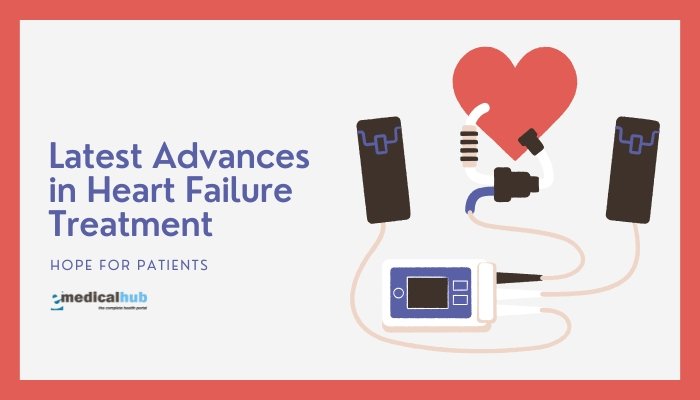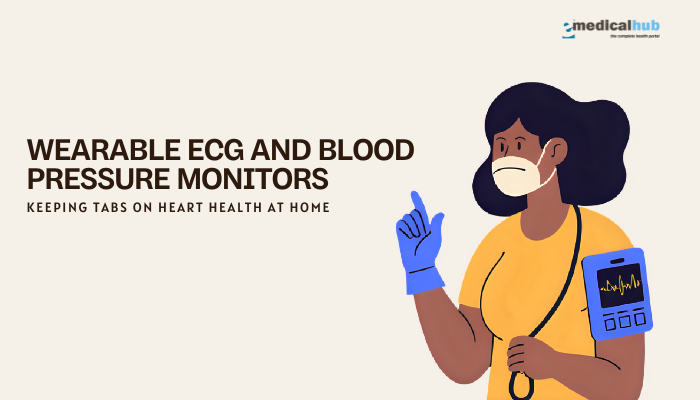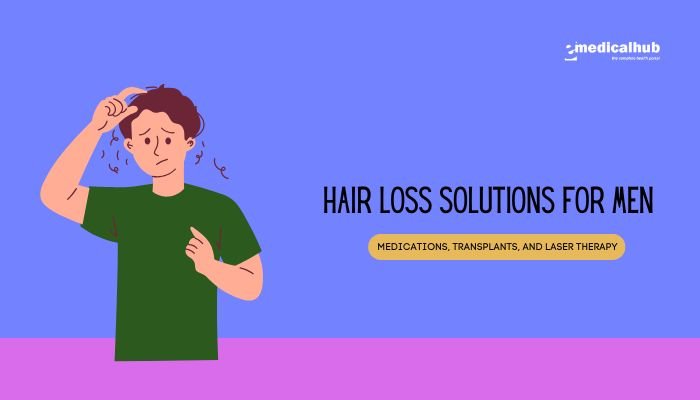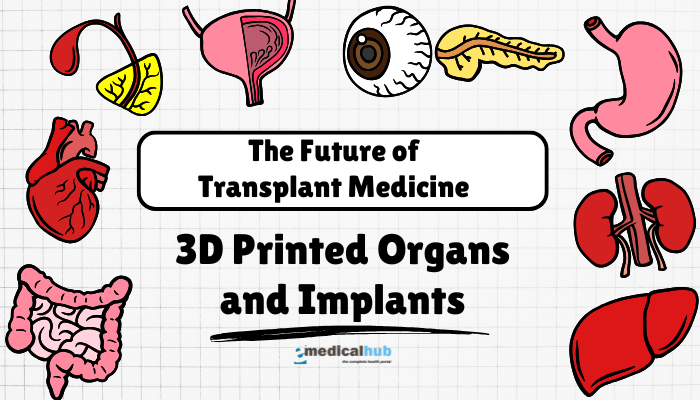Introduction
High cholesterol is a key factor in developing cardiovascular diseases such as coronary artery disease, stroke, and peripheral artery disease. Many people view cholesterol solely as harmful, but the body relies on this waxy, fat-like substance for important functions.
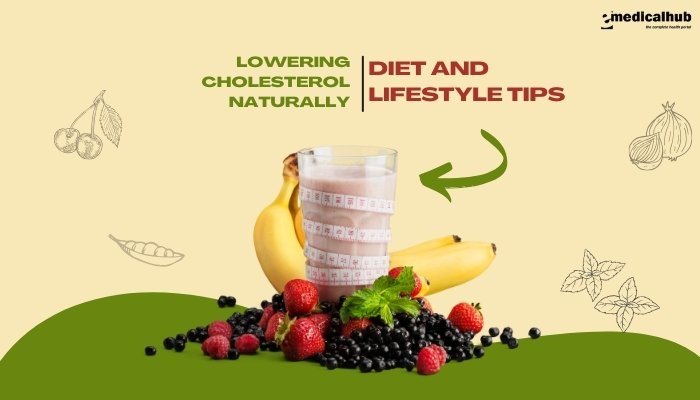
There are two main types of cholesterol in the blood: low-density lipoprotein (LDL), often dubbed “bad” cholesterol, and high-density lipoprotein (HDL), frequently called “good” cholesterol. When LDL levels climb too high, they can build up in the arteries as plaque, elevating the risk of blockages.
For those aiming to lower their cholesterol without immediate reliance on medication, a combination of dietary and lifestyle changes can be effective. Though some may eventually need prescription support, many can make significant improvements through consistent, healthy behaviors.
This article explores the fundamentals of cholesterol, its impact on health, and science-based strategies for natural control. Tables, bullet points, and clear headings make it easier to follow specific recommendations for diet, exercise, and other areas of daily life.
Understanding Cholesterol Basics
Cholesterol is a lipid produced mainly in the liver. It travels through the bloodstream within lipoproteins. These lipoproteins differ in density and function:
- Low-Density Lipoprotein (LDL)
This carries cholesterol to various tissues. When levels are too high, LDL can deposit on artery walls, forming plaque. Elevated LDL is a major risk factor for atherosclerosis and related heart problems. - High-Density Lipoprotein (HDL)
HDL helps remove excess cholesterol from tissues and returns itto the liver for processing or excretion. Higher levels of HDL can protect against heart disease. - Triglycerides
Though not the same as cholesterol, triglycerides are another form of fat in the blood. Elevated triglycerides often accompany high LDL, further impacting heart health.
Why Cholesterol Matters
- Plaque Buildup: Excess LDL can stick to artery walls, narrowing them and restricting blood flow.
- Inflammation: Chronic high cholesterol can inflame arteries, weakening them over time.
- Risk of Heart Events: The higher your LDL, the greater the likelihood of heart attacks or strokes, especially when combined with other risk factors (high blood pressure, obesity, smoking, diabetes, etc.)
Factors That Influence Cholesterol
Several elements, both internal and external, determine cholesterol levels:
- Genetics
Some people have a familial predisposition to high LDL or low HDL, requiring targeted interventions or medications. - Diet
A diet high in saturated fats, trans fats, or refined carbohydrates can raise LDL. Conversely, certain foods help increase HDL or lower LDL. - Physical Activity
Regular exercise helps manage weight, improves blood pressure, and can raise HDL while lowering LDL. - Weight and Body Composition
Excess weight—particularly around the waist—often correlates with higher LDL and triglycerides, as well as lower HDL. - Smoking
Chemicals in tobacco smoke degrade vessel linings and worsen cholesterol balance. - Age and Sex
Cholesterol often rises with age. Before menopause, women typically have higher HDL levels than men, but after menopause, women’s LDL can climb significantly. - Medical Conditions
Diabetes, hypothyroidism, liver disease, and kidney disease can affect how the body processes cholesterol.
Understanding these factors helps shape a strategy to lower cholesterol naturally.
Setting Target Goals
While “optimal” cholesterol ranges can vary, many guidelines suggest:
- Total Cholesterol: Under 200 mg/dL is generally considered desirable.
- LDL (“Bad”) Cholesterol: Ideally below 100 mg/dL for low-risk individuals. Under 70 mg/dL may be recommended for high-risk individuals.
- HDL (“Good”) Cholesterol: Above 60 mg/dL offers protective benefits; below 40 mg/dL (men) or 50 mg/dL (women) is a risk factor.
- Triglycerides: Below 150 mg/dL is normal, with 150–199 mg/dL as borderline high.
A healthcare provider can personalize these ranges, especially for those with additional risk factors. Even modest improvements in these numbers can significantly reduce the likelihood of cardiovascular problems.
Top Dietary Tips to Reduce Cholesterol
Focus on High-Fiber Foods
Fiber, especially soluble fiber, can bind cholesterol in the gut and assist in excreting it before it enters circulation.
- Whole Grains: Oats, barley, brown rice, and whole wheat breads/pastas.
- Legumes: Beans (kidney, black, pinto), lentils, and chickpeas offer substantial soluble fiber.
- Fruits and Vegetables: Apples, pears, berries, okra, and eggplant also contain significant fiber.
Aim for at least 25–30 grams of total fiber daily, with a sizable portion from soluble sources.
Limit Saturated Fats
Saturated fats can raise LDL levels. They are typically solid at room temperature and come from animal sources or certain tropical oils.
- High Saturated Foods: Red meats (fatty cuts), butter, full-fat dairy, processed meats.
- Better Choices: Lean proteins (skinless poultry, fish), low-fat dairy, unsaturated plant-based oils.
Reduce daily saturated fat intake to less than 7% of total calories for a noticeable impact on LDL.
Avoid Trans Fats
Trans fats (partially hydrogenated oils) are even more damaging, as they both raise LDL and reduce HDL. While many food manufacturers have phased out trans fats, reading labels is still important.
- Common Sources: Some baked goods, fried fast foods, and margarine spreads (though this is less common now).
- Check Ingredients: “Hydrogenated” or “partially hydrogenated” oils signal trans fats.
Strive to eliminate trans fats wherever possible.
Embrace Unsaturated Fats
Unsaturated fats can help reduce LDL when they replace saturated or trans fats.
- Monounsaturated Fats: Found in avocados, nuts (almonds, peanuts), and olive oil.
- Polyunsaturated Fats: Present in walnuts, flaxseeds, and fatty fish (salmon, mackerel, sardines) due to omega-3 fatty acids.
Studies show omega-3s help lower triglycerides and may slightly elevate HDL.
Include Plant Sterols and Stanols
Sterols and stanols structurally resemble cholesterol, but when eaten, they reduce the amount of cholesterol the body absorbs. Some spreads, juices, or yogurts are fortified with them.
- Recommended Amount: Around 2 grams daily of plant sterols/stanols can help lower LDL by up to 10%.
- Food Sources: Fortified margarine, fortified juice, or cereals; or consider a supplement if dietary sources are insufficient.
Choose Lean Proteins
Substituting lean proteins for those high in saturated fats can significantly reduce LDL levels.
- Fish: Rich in omega-3s (especially salmon, tuna, trout).
- Skinless Poultry: Chicken breast or turkey.
- Plant Proteins: Beans, lentils, tofu, and tempeh offer cholesterol-free protein.
Increase Fruit and Vegetable Intake
Fruits and vegetables supply antioxidants, fiber, and other nutrients that contribute to heart health.
- Variety Matters: Different colors signify different antioxidants.
- Snack Wisely: Replace chips or crackers with carrot sticks, bell pepper strips, or apple slices.
Watch Portion Sizes and Calorie Balance
Even healthy foods can lead to weight gain if overeaten, indirectly affecting cholesterol. Keep an eye on total calories in relation to daily energy expenditure.
Lifestyle Modifications Beyond Diet
Regular Exercise
Physical activity improves cardiovascular efficiency, aids weight control, and helps shift the HDL-LDL balance favorably.
- Aim: At least 150 minutes of moderate-intensity aerobic exercise per week (e.g., brisk walking, cycling).
- Include Resistance Training: Twice-weekly strength sessions to maintain muscle mass and metabolic rate.
- Incorporate Daily Moves: Walk on breaks, use stairs, or do stretching intervals to reduce sedentary periods.
Achieve and Maintain a Healthy Weight
Excess weight can elevate LDL and triglycerides while lowering HDL. Modest reductions in weight—5 to 10% of total body weight—can measurably impact lipid profiles.
- Practical Tip: Find a sustainable eating pattern and integrate daily movement. Crash diets often fail over time.
- Behavioral Tracking: Keep a food or activity journal; set incremental goals (like losing 1–2 pounds a week if appropriate).
Stop Smoking
Smoking oxidizes LDL, making it more prone to form plaques. Quitting boosts HDL and reduces clot formation.
- Immediate Effects: Heart rate and blood pressure lower within minutes of quitting.
- Long-Term Gains: Over time, cardiovascular disease risk converges closer to that of non-smokers.
- Support Tools: Nicotine replacement therapy, counseling, or medication (as needed).
Limit Alcohol
Excessive alcohol intake can raise triglycerides and overall caloric load. While moderate wine consumption is sometimes linked to slight HDL improvement, the American Heart Association cautions that these effects are minimal compared to potential risks.
- Moderate Levels: Up to one drink per day for women, two for men.
- Healthier Alternatives: Sparkling water with fruit or nonalcoholic beverages.
Manage Stress
Chronic stress can impact hormones, raising blood pressure and cholesterol levels in some individuals.
- Techniques: Meditation, deep breathing exercises, yoga, or journaling.
- Social Support: Communicating with friends, family, or mental health professionals can ease emotional burden.
- Physical Activity: Exercise is a proven stress reducer and also directly benefits lipid profiles.
Get Adequate Sleep
Short or poor-quality sleep influences hormones controlling hunger and metabolism, potentially boosting LDL and body weight.
- Sleep Goal: Aim for 7–9 hours per night.
- Sleep Hygiene: Limit screen time before bed, keep the bedroom cool and dark, and maintain a consistent schedule.
Table: Foods That Lower Cholesterol vs. Foods to Limit
| Foods That Help Lower Cholesterol | Foods to Limit |
| Oats, barley, whole grains (source of soluble fiber) | Full-fat dairy (cheese, butter, whole milk) |
| Fruits (apples, pears, berries) | Fatty cuts of red meat |
| Vegetables (broccoli, Brussels sprouts, okra) | Processed meats (bacon, sausage) |
| Beans, lentils, chickpeas | Fried fast foods |
| Fatty fish (salmon, mackerel, sardines) | Baked goods high in trans/saturated fats (pastries) |
| Nuts and seeds (almonds, walnuts, flaxseeds) | Snack chips with hydrogenated oils |
| Avocado, extra-virgin olive oil | Certain tropical oils (coconut, palm kernel) in large amounts |
The Role of Supplements
Certain dietary supplements may help individuals who struggle to achieve ideal cholesterol ranges through diet alone. However, it is essential to consult a healthcare provider before beginning any supplement:
- Omega-3 Fatty Acids (Fish Oil)
Can reduce triglycerides and provide anti-inflammatory effects. However, large doses are needed for significant LDL changes. - Soluble Fiber Supplements
Psyllium husk is a prime example, shown to help lower LDL levels when added to daily routines. - Niacin (Vitamin B3)
High doses can raise HDL and lower LDL, but side effects (like flushing) and potential liver strain require medical guidance. - Plant Sterols/Stanols
Found in fortified foods or supplements, these reduce cholesterol absorption in the gut. - Red Yeast Rice
Contains monacolin K, chemically similar to a statin. It can lower LDL but must be used cautiously, as potency varies, and unregulated products may have contaminants. - Garlic Extract
Some evidence suggests mild LDL-lowering effects, though consistent scientific consensus is not strong. - Coenzyme Q10
This is often taken with statin medications to reduce side effects, though it does not directly lower LDL.
Checking Progress: When to Expect Results
Natural methods do not produce overnight changes. Most people see meaningful shifts in cholesterol within 8–12 weeks of consistent lifestyle improvements. Monitoring frequency:
- Blood Tests: A fasting lipid panel every 3 months or so can gauge progress.
- Weight and Waist Circumference: Track weekly or monthly, especially if weight management is a goal.
- Blood Pressure: Regular checks to ensure overall cardiovascular health improvements.
If changes plateau or risk remains high, a healthcare provider may discuss medication. However, even when medication is required, healthy habits remain essential for best outcomes.
Addressing Common Obstacles
Many people begin with enthusiasm but falter due to everyday challenges. Identifying potential obstacles and solutions can maintain momentum:
- Time Constraints
- Meal Prep: Prepare large batches of healthy dishes to freeze or refrigerate.
- Quick Exercise: Fit short bursts of activity (e.g., 10-minute walks) throughout the day.
- Confusion Over Food Labels
- Focus on Whole Foods: More fruits, vegetables, and minimally processed items
- Read Carefully: Watch for hidden sugars or hydrogenated oils.
- Dining Out
- Menu Adjustments: Request sauces on the side, choose grilled items over fried, prioritize salads, and skip sugary beverages.
- Portion Awareness: Restaurant servings can be large; consider sharing or taking half home.
- Social Settings
- Healthy Potlucks: Bring a nutritious dish to gatherings.
- Communication: Let friends and family know about health goals so they can support you.
- Temptation and Cravings
- Healthier Substitutes: Swap high-fat, sugary treats for dark chocolate, fruit, or yogurt.
- Mindful Eating: Slow down to savor flavors, track portion sizes, and recognize fullness cues.
Special Considerations
Women and Cholesterol
Women’s cholesterol patterns can change significantly post-menopause due to lower estrogen levels. They may see rising LDL and dropping HDL. Maintaining an active lifestyle and balanced diet during and after this transition can mitigate such shifts.
Older Adults
Aging vessels can be more prone to plaque buildup. Activity might be limited due to mobility or joint issues. Even gentle exercises, like water aerobics or light resistance work, support better lipid levels. Consulting a doctor for individualized advice is crucial.
People with Chronic Conditions
Hypertension, kidney disease, or diabetes require integrated strategies. Coordinated care among dietitians, endocrinologists, and cardiologists ensures that changes made for one condition do not inadvertently worsen another.
Children and Adolescents
Kids and teens with high cholesterol (often due to family history or obesity) benefit from early dietary and activity habits. Encourage them to enjoy balanced meals, limit sugary snacks, and stay active with sports or family outings.
Success Stories (Anecdotal Quote)
“When my doctor told me my LDL was 170 mg/dL, I panicked. But I started walking 30 minutes each day and switched to whole grains and more vegetables. After four months, my LDL dropped to 135 mg/dL. I feel lighter and more energetic!”
Such improvements underscore the potential of consistent, realistic steps. While results can differ by individual, lifestyle changes often yield rewards.
Myths vs. Facts
- Myth: “Eating eggs automatically raises cholesterol.”
Fact: Moderate egg consumption (especially egg whites or limited yolks) does not drastically impact total cholesterol for most people. Focus on overall diet balance. - Myth: “All fats are bad.”
Fact: Unsaturated fats can lower LDL; only saturated and trans fats are strongly linked with higher LDL. - Myth: “If I’m thin, I can’t have high cholesterol.”
Fact: Cholesterol is influenced by genetics, diet composition, and physical activity. Slim individuals can still have elevated LDL. - Myth: “Skipping meals helps lose weight and lower cholesterol.”
Fact: Irregular eating patterns can backfire, leading to overeating or poor metabolic control. - Myth: “Supplements replace the need for a healthy lifestyle.”
Fact: Supplements might help, but diet and exercise are the foundation. Supplements alone rarely achieve dramatic cholesterol drops.
When to Seek Professional Help
While many see progress through dietary and lifestyle adjustments, it is important to know when additional intervention is prudent:
- Persistently High LDL
If after 3–6 months of lifestyle changes your LDL remains in a dangerous range, a doctor may suggest medication (e.g., statins, ezetimibe, PCSK9 inhibitors). - Genetic Factors
Familial hypercholesterolemia often requires earlier and more aggressive management. Testing is recommended if there is a family history of very high LDL or early heart disease. - Multiple Risk Factors
Coexisting conditions like diabetes or hypertension, especially combined with a strong family history of premature heart disease, may necessitate a multi-pronged treatment plan. - Lifestyle Roadblocks
If stress, time constraints, or emotional triggers repeatedly derail progress, professionals like dietitians, psychologists, or exercise physiologists can guide personalized approaches. - Worsening Symptoms
Signs like chest pain, shortness of breath, or frequent palpitations might suggest advanced atherosclerosis or other complications—prompt attention is critical
Sample 7-Day Meal Plan for Lowering Cholesterol
While everyone’s nutritional needs vary, here is a general template to inspire healthy eating patterns. Adjust portions based on individual energy requirements and consult a nutritionist for personalized advice.
Day 1
- Breakfast: Oatmeal topped with berries and a sprinkle of flaxseed
- Lunch: Mixed greens salad with chickpeas, cherry tomatoes, cucumber, olive oil, and vinegar dressing
- Dinner: Salmon fillet (baked) with steamed broccoli and brown rice
- Snack: Apple slices with a tablespoon of almond butter
Day 2
- Breakfast: Low-fat yogurt parfait with fresh fruit and whole-grain granola
- Lunch: Lentil soup with whole-grain bread, side of carrot sticks
- Dinner: Chicken breast (skinless) with roasted vegetables (zucchini, peppers)
- Snack: Pear or peach
Day 3
- Breakfast: Whole-wheat toast with avocado spread and a boiled egg
- Lunch: Tuna salad (light mayo or yogurt-based) in lettuce wraps, side of mixed fruit
- Dinner: Tofu stir-fry with veggies in a small amount of sesame oil, served over brown rice
- Snack: Handful of walnuts or almonds
Day 4
- Breakfast: Smoothie (spinach, berries, low-fat milk, chia seeds)
- Lunch: Whole-grain pasta with tomato sauce, grilled chicken strips, and a side salad
- Dinner: Baked cod, quinoa, and steamed asparagus
- Snack: Cottage cheese with pineapple chunks
Day 5
- Breakfast: Oat bran cereal with sliced banana and skim milk
- Lunch: Veggie wrap (hummus, tomatoes, cucumbers, spinach) on whole-wheat tortilla
- Dinner: Turkey meatballs with tomato sauce on spaghetti squash, plus a small side salad
- Snack: Low-fat Greek yogurt sprinkled with oats
Day 6
- Breakfast: Egg white omelet with spinach and mushrooms, whole-grain toast
- Lunch: Bean burrito (black beans, salsa, shredded lettuce) in a whole-wheat wrap
- Dinner: Grilled shrimp kebabs with bell peppers and onions, served over barley
- Snack: Berries with a bit of dark chocolate (70% cacao)
Day 7
- Breakfast: Whole-grain waffles topped with fresh berries, drizzle of pure maple syrup
- Lunch: Large salad with salmon, sprinkled with seeds (pumpkin or sunflower), and olive oil dressing
- Dinner: Turkey chili (lean ground turkey, kidney beans, tomatoes), served with a small portion of brown rice
- Snack: Popcorn (air-popped) lightly seasoned, not buttered
Integrating Behavior Change for Long-Term Success
- Set Realistic Goals
Rather than attempting a drastic overhaul, focus on small, consistent shifts—like swapping refined grains for whole grains or walking an extra 10 minutes daily. - Build Support Systems
Engage family members in meal prep and exercise sessions. Consider joining community cooking classes or walking clubs. - Track Progress
Writing down daily food intake, exercise, and weekly weigh-ins can reveal trends. Blood test updates every few months confirm improvement in LDL and HDL. - Celebrate Milestones
Acknowledge achievements—like lowering LDL by 10 points or completing a month of regular workouts. Positive reinforcement encourages ongoing commitment. - Reassess Periodically
As habits form and cholesterol improves, new goals might emerge. Alternatively, if progress stalls, adjusting portion sizes or intensifying activity might help.
Conclusion
Lowering cholesterol naturally involves multiple strategies that build on each other—improving diet quality, raising physical activity levels, managing stress, and maintaining healthy body weight. Nutrient-dense foods like whole grains, legumes, fruits, vegetables, lean proteins, and healthy fats work together to bring down LDL while bolstering HDL. Coupled with regular movement and an overall balanced lifestyle, many people can see meaningful shifts in their cholesterol profiles within a few months.
However, success requires realistic goals and consistent follow-through. Even if medication becomes necessary, adopting these habits remains essential for optimum cardiovascular health. Tracking progress with lab tests, working with professionals such as dietitians or trainers, and enlisting social support can all sustain motivation. By combining evidence-based dietary guidelines with an active, mindful lifestyle, it is possible to protect heart health effectively and reduce the risks tied to high cholesterol.
References
- National Heart, Lung, and Blood Institute. High blood cholesterol: what you need to know. NIH Publication No. 20-HL-2405. 2020.
- American Heart Association. Dietary recommendations for healthy children and adolescents. Circulation. 2005;112(13):2061-2075.
- Grundy SM, Stone NJ, Bailey AL, et al. 2018 AHA/ACC/AACVPR/AAPA/ABC/ACPM/ADA/AGS/ APhA/ASPC/NLA/PCNA guideline on the management of blood cholesterol. J Am Coll Cardiol. 2019;73(24):3168-3209.
- Kris-Etherton PM, Petersen KS, Velarde G, et al. Barriers, opportunities, and challenges in addressing disparities in diet-related cardiovascular disease in the United States. J Am Heart Assoc. 2020;9(7):e014433.
- Maki KC, Palacios OM, Bell M, et al. Use of dietary supplements for managing low-density lipoprotein cholesterol: a science advisory from the American Heart Association. Circulation. 2018;138(19):e727-e749.
- Mensink RP. Effects of saturated fatty acids on serum lipids and lipoproteins: a systematic review and regression analysis. Geneva: World Health Organization; 2016.
- Katzmarzyk PT, Friedenreich C, Shiroma EJ, et al. Physical inactivity and non-communicable disease burden in low-income, middle-income and high-income countries. Br J Sports Med. 2022;56(2):101-106.
- Gerber M, Booth JN 3rd, Morris PB, et al. Sedentary behaviors and cardiovascular disease risk in physically active adults. Am J Hypertens. 2019;32(1):106-112.
- Ridker PM, Cook NR, et al. Effects of rosuvastatin on C-reactive protein and LDL cholesterol among various risk populations. Circulation. 2005;112(22):3766-74.
- Blair SN, Morris JN. Healthy hearts—and the universal benefits of being physically active: physical activity and health. Ann Epidemiol. 2009;19(4):253-256.
- Nelson RH. Hyperlipidemia as a risk factor for cardiovascular disease. Prim Care. 2013;40(1):195-211.
- Lordan R, Tsoupras A, Mitra B, et al. Dairy fats and cardiovascular disease: do we really need to be concerned? Foods. 2018;7(3):29.


